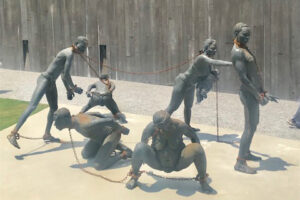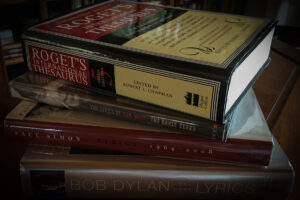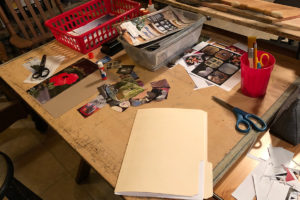A simple, humble bungalow started me on an adventure. When my husband and I bought our first house in 1983, it spurred me to investigate the various styles of houses. Ours had a straightforward floor plan with many charming details but, at the time, I had no idea what style it was. I bought a book about American house architecture and was soon hooked on learning more.

I found out that our house was a bungalow style. This led me on a journey to discover Arts and Crafts Architecture and, in fact, fall in love with the entire period known as Arts and Crafts in England and America. In 2001, the pinnacle of my exploration was touring The Gamble House built in 1908 by architects Greene and Greene in Pasadena, California.
The details are not the details. They make the design.
— Charles Eames (1907-1978) American designer, architect, and film maker
Greene and Greene Architects
Brothers Charles Sumner Greene (1868-1957) and Henry Mather Greene (1870-1954) were influential American architects in the early 20th Century. Mostly active in California, their houses and large-scale bungalows are examples of the American Arts and Crafts Movement.
They were born in Brighton, Ohio and grew up primarily in St. Louis, Missouri and in West Virginia. As teens, they studied metal and woodworking at the Manual Training School of Washington University in St. Louis. They each received a “certificate for completion of partial course,” a special two-year program at MIT’s School of Architecture in 1891. They studied classical building styles and intended to gain certification for apprenticeships with architecture and construction firms.
In 1893 their parents asked them to join them in Pasadena where they had moved a year earlier. On their way out to California, Charles and Henry stopped at the World’s Columbian Exposition in Chicago where they saw examples of Japanese architecture. This architecture made lasting impressions on them.

The architectural firm of Greene and Greene was established in Pasadena in January 1894. In 1901, after a trip to England, Charles brought back Arts & Crafts ideals a decade before the movement might have reached the West Coast. The brothers took an artistic leap and attempted to synthesize the best of many worlds into a new California vernacular: the adobe and Mission forms of the region, the rugged Shingle Style from the Northeast, and the Italian and Japanese architecture they had studied. Of particular interest was Japanese timber-frame construction. They developed distinctive stylistic elements that came together in personal idiomatic designs within the Arts and Crafts aesthetic. They also began designing furnishings for their houses and were fortunate to find nearby craftsmen who could build furniture to their specifications.
Some distinctive features of their homes are massive pilings of arroyo stone and clinker brick, verandas, open courtyards, shaded porches, and low-pitched rooflines with rafter tails.

Ideas from the elaborate joinery and framing of traditional Japanese architecture are evident in the large structural features in their houses. The structure of the house is seen and reveled in, rather than hidden in decoration. The visual importance of the joints, pegs, and complex woodwork in the houses were outgrowths of the principles taught in the Manual Training School of their early years.
The Arts and Crafts movement entailed many areas of art, but architecture was certainly one of the most important. From the Greene and Greene houses in Pasadena to the mass marketed Sears & Roebuck mail order bungalows, there was a craftsman style house for every budget.
The bungalow had more to do with how Americans live today than any other building that has gone remotely by the name of architecture in our history.
— Russell Lynes (1910-1991) American art historian, photographer, author, and managing editor of Harper’s Magazine
The Gamble House
The Gamble House (1908) is considered one of the finest examples of residential architecture in the United States. The architectural firm Greene and Greene designed and oversaw the building of this magnificent “ultimate bungalow.”

Pasadena in the 1890s and early twentieth century was a magnet for artistic thinkers and the city was booming with wealthy clientele. The Gamble house was built with a love for natural materials, the willingness to sweat the details, and a determination to get it right. Money was no object.

It’s not just about building a building, it’s about creating and building a life.
— The Gamble House (2017) a film by director and writer Don Hahn
The house was built as a home for David B. Gamble of the Procter & Gamble Company. Now it is a National Historic Landmark, a California Historical Landmark, and is open for public tours.
The exterior of the house along with its beautiful garage gained exposure as the home of “Doc” Brown in the 1985 movie Back to the Future.
My Experience
In my eagerness to learn about bungalows, I bought books with pictures and I spent many hours poring over the beautiful illustrations. I found interesting bungalow themed magazines and loved reading the articles. Our first two houses were bungalows and we built a larger one in 1997. I never dreamed or imagined that I would tour one of the most famous examples!
In 2001 my husband and I drove to Palm Springs for a handbell convention. Most of the days were packed with events, however, we had Sunday free. I knew the Gamble House was in Pasadena, but I had no idea how near or far that was from Palm Springs. After looking at the map, I realized it was only a few hours away. We might never be that close again. We just had to go! And from there—it was only an hour to Santa Monica and the Pacific Ocean.
Since, hopefully, the traffic would not be too heavy on a Sunday morning, I cajoled my husband into driving to Pasadena to tour the house and a few surrounding sights—and, then go on to Santa Monica to dip our toe in the Pacific Ocean!
I can’t describe the utter joy and awe at the first glimpse of the Gamble House rising above the surrounding landscape. At once you are driving along a typical street and you look over, and there it is—nestled among, but standing out from the surrounding buildings—majestic, friendly, and picturesque.
We arrived in Pasadena before the time for the tour. That allowed us to ramble around the outside of the house and lovely yard. The morning was quiet and serene. I am normally in church on Sunday. Today, this was my church. I sat there and breathed it all in to remember that moment, that morning, and that place.

We sat for a while on the large terrace and enjoyed the lovely California climate. As we sat in the beauty of the architecture and surrounding landscape, God was there—in the architectural creativity, the charming rock details, and the glorious sunshine. There I sat worshipping a God of wonder, beauty, and creativity—all manifest in this house, the California morning, and nature around us.
I had seen many pictures of the rooms, grounds, and terraces . . . but nothing prepared me for the expansiveness of the house, the beauty of the details, the exquisite wood joinery, and the sun shining through the stained glass. Touring this glorious work of art was transformative.
Architecture is fine art. Great art inspires.
— The Gamble House (2017) a film by director and writer Don Hahn

To commemorate our visit, I bought an Arts and Crafts vase
at the gift shop in the Gamble House garage.
Then on to Santa Monica!















Leave a Reply
Your email is safe with us.